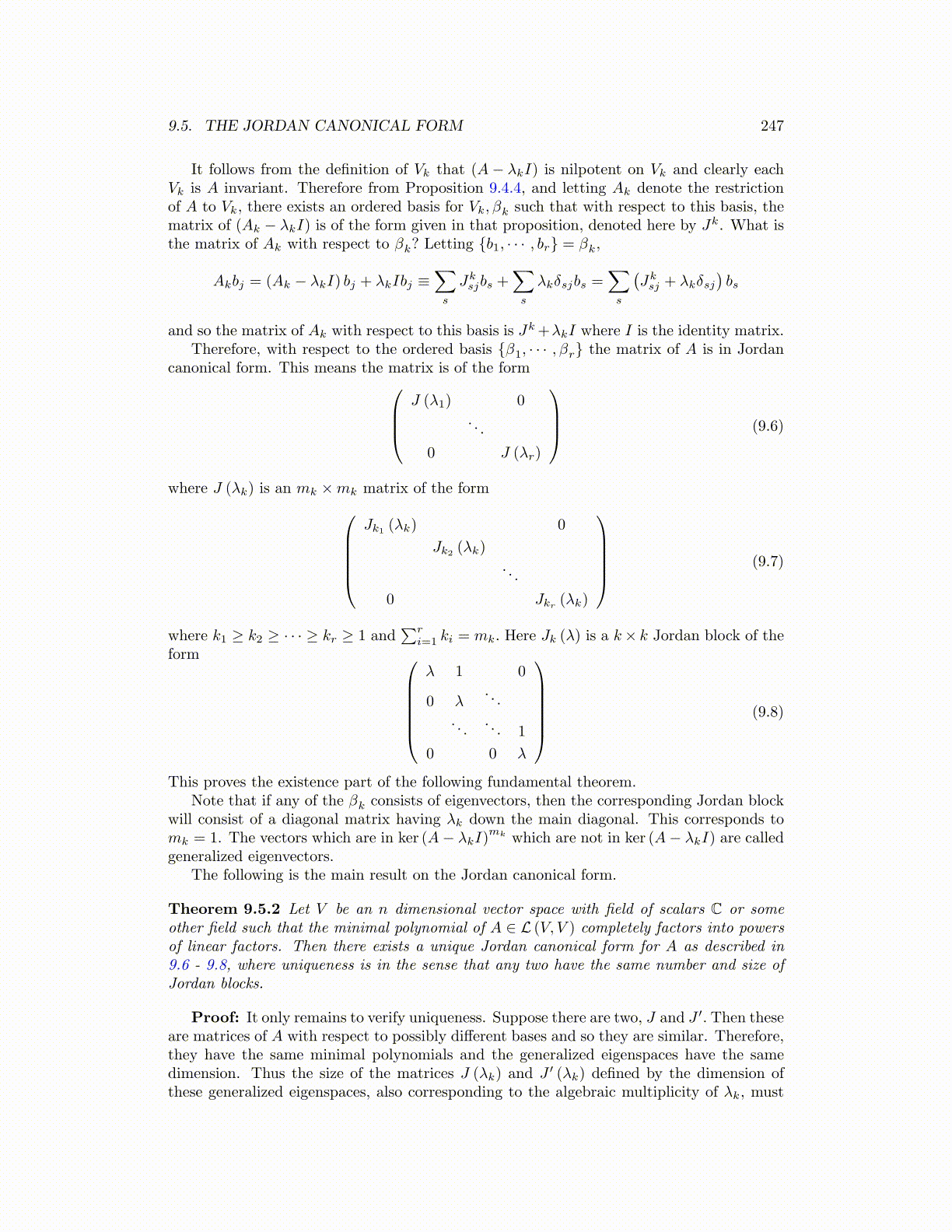
9.5. THE JORDAN CANONICAL FORM 247
It follows from the definition of Vk that (A− λkI) is nilpotent on Vk and clearly eachVk is A invariant. Therefore from Proposition 9.4.4, and letting Ak denote the restrictionof A to Vk, there exists an ordered basis for Vk, βk such that with respect to this basis, thematrix of (Ak − λkI) is of the form given in that proposition, denoted here by Jk. What isthe matrix of Ak with respect to βk? Letting {b1, · · · , br} = βk,
Akbj = (Ak − λkI) bj + λkIbj ≡∑s
Jksjbs +
∑s
λkδsjbs =∑s
(Jksj + λkδsj
)bs
and so the matrix of Ak with respect to this basis is Jk+λkI where I is the identity matrix.Therefore, with respect to the ordered basis {β1, · · · , βr} the matrix of A is in Jordan
canonical form. This means the matrix is of the formJ (λ1) 0
. . .
0 J (λr)
(9.6)
where J (λk) is an mk ×mk matrix of the formJk1 (λk) 0
Jk2(λk)
. . .
0 Jkr(λk)
(9.7)
where k1 ≥ k2 ≥ · · · ≥ kr ≥ 1 and∑r
i=1 ki = mk. Here Jk (λ) is a k× k Jordan block of theform
λ 1 0
0 λ. . .
. . .. . . 1
0 0 λ
(9.8)
This proves the existence part of the following fundamental theorem.Note that if any of the βk consists of eigenvectors, then the corresponding Jordan block
will consist of a diagonal matrix having λk down the main diagonal. This corresponds tomk = 1. The vectors which are in ker (A− λkI)
mk which are not in ker (A− λkI) are calledgeneralized eigenvectors.
The following is the main result on the Jordan canonical form.
Theorem 9.5.2 Let V be an n dimensional vector space with field of scalars C or someother field such that the minimal polynomial of A ∈ L (V, V ) completely factors into powersof linear factors. Then there exists a unique Jordan canonical form for A as described in9.6 - 9.8, where uniqueness is in the sense that any two have the same number and size ofJordan blocks.
Proof: It only remains to verify uniqueness. Suppose there are two, J and J ′. Then theseare matrices of A with respect to possibly different bases and so they are similar. Therefore,they have the same minimal polynomials and the generalized eigenspaces have the samedimension. Thus the size of the matrices J (λk) and J ′ (λk) defined by the dimension ofthese generalized eigenspaces, also corresponding to the algebraic multiplicity of λk, must